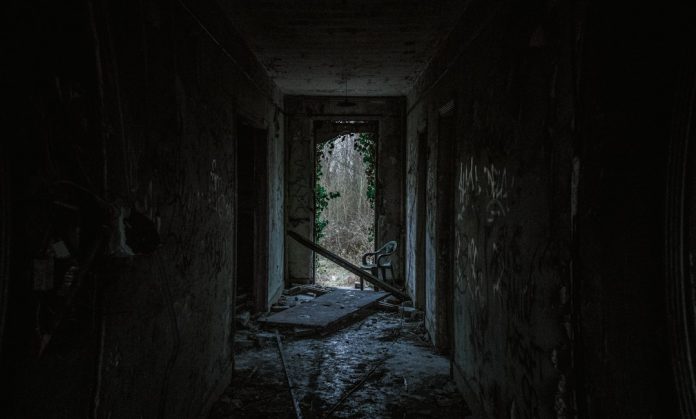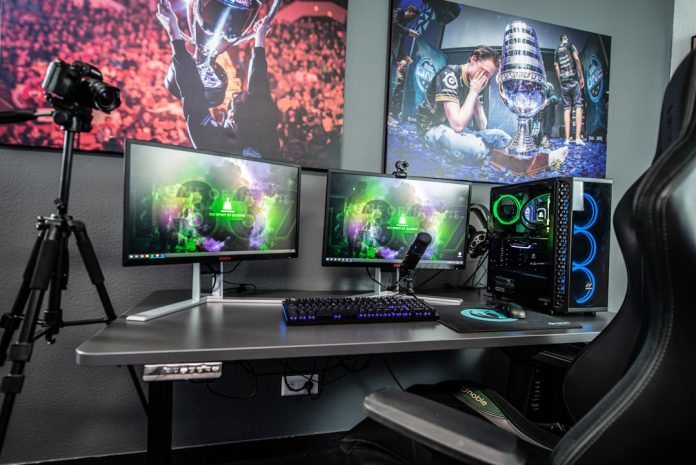Building a competitive deck in MTG Arena is essential for players who want to succeed in the game. MTG Arena is a digital version of the popular trading card game Magic: The Gathering, and it offers players the opportunity to compete against others in online matches. Having a competitive deck gives players an edge in these matches, increasing their chances of victory.
A competitive deck is one that is optimized for winning. It is carefully crafted with a specific strategy in mind and includes powerful cards that work well together. Building a competitive deck requires knowledge of the game’s mechanics, understanding of the metagame, and strategic thinking.
Key Takeaways
- Building a competitive deck in MTG Arena requires understanding the metagame and choosing the right colors for your deck.
- Card synergy and combos are important for creating a powerful deck, but evaluating card power and rarity is also crucial.
- A consistent mana curve is essential for ensuring your deck runs smoothly, and sideboarding strategies can help you adapt to different opponents.
- Testing and refining your deck is key to improving your win rate, and staying up to date with MTG Arena updates and releases can give you an edge.
- Participating in tournaments and competitive play can help you hone your skills and earn rewards in MTG Arena.
Understanding the MTG Arena Metagame
The metagame in MTG Arena refers to the current state of the game and the strategies and decks that are popular among players. Understanding the metagame is crucial when building a competitive deck because it allows players to anticipate what they will be facing and adjust their deck accordingly.
The metagame is constantly evolving as new sets are released and new strategies emerge. There are different archetypes in the metagame, each with its own strengths and weaknesses. These archetypes include aggro, control, midrange, combo, and tempo decks. Aggro decks focus on dealing damage quickly, control decks aim to disrupt opponents’ strategies, midrange decks have a balance of aggression and control, combo decks rely on specific card combinations for victory, and tempo decks aim to maintain control of the game’s pace.
Choosing the Right Colors for Your Deck
In MTG Arena, there are five different colors: white, blue, black, red, and green. Each color has its own strengths and weaknesses, and understanding these can help players choose the right colors for their deck.
White is known for its ability to gain life and protect creatures. It has strong removal spells and can create an army of small creatures. Blue is the color of control and manipulation. It excels at countering spells, drawing cards, and bouncing creatures. Black is the color of death and decay. It has access to powerful removal spells and can drain opponents’ life. Red is the color of aggression and direct damage. It has fast creatures and spells that deal damage directly to opponents. Green is the color of nature and growth. It has large creatures and spells that ramp up mana.
When choosing colors for a deck, players should consider their preferred playstyle and the current metagame. They should also think about the strengths and weaknesses of each color and how they can complement each other.
Understanding Card Synergy and Combos
Card synergy refers to the interaction between cards in a deck that enhances their effectiveness. Combos, on the other hand, are specific combinations of cards that, when played together, create a powerful effect or win condition.
Identifying card synergy and combos is crucial when building a competitive deck because it allows players to maximize the potential of their cards. This can be done by looking for cards that have similar abilities or effects, or by finding cards that work well together to create a powerful combo.
For example, a deck that focuses on gaining life may include cards that have abilities triggered by gaining life, such as gaining additional creatures or drawing extra cards. A combo deck may include cards that, when played together, create an infinite loop or an unstoppable win condition.
Evaluating Card Power and Rarity
In MTG Arena, each card has a power level and rarity. The power level of a card refers to its overall strength and usefulness in a deck, while rarity indicates how difficult it is to obtain.
When building a competitive deck, it is important to include powerful cards that can give players an advantage in the game. These cards are often rare or mythic rare, but there are also powerful common and uncommon cards that can be included.
Evaluating card power and rarity can be done by considering the card’s mana cost, its abilities or effects, and how it fits into the overall strategy of the deck. Players should also consider the current metagame and how certain cards may be more or less effective against popular strategies.
Building a Consistent Mana Curve
A mana curve refers to the distribution of mana costs in a deck. A consistent mana curve is important because it ensures that players have access to the right amount of mana at each stage of the game.
When building a deck, players should aim for a smooth mana curve that allows them to play their spells on curve and maintain a steady flow of resources. This means including a mix of low-cost, mid-cost, and high-cost spells to ensure that there are options available at every stage of the game.
Having a consistent mana curve is important because it allows players to make efficient use of their resources and play their spells when they need them. It also reduces the chances of getting mana flooded or mana screwed, which can severely impact a player’s chances of winning.
Sideboarding Strategies and Techniques
Sideboarding refers to the process of swapping cards in and out of a deck between games in a match. It is an important aspect of competitive play because it allows players to adapt their deck to better counter their opponent’s strategy.
When sideboarding, players should consider the strengths and weaknesses of their opponent’s deck and make adjustments accordingly. This may involve adding cards that can disrupt their opponent’s strategy or removing cards that are less effective in the matchup.
Having a strong sideboard is important because it allows players to have additional options and strategies available to them during matches. It also gives them an advantage by allowing them to adapt their deck to better counter their opponent’s strategy.
Testing and Refining Your Deck
Testing and refining a deck is an ongoing process that is crucial for success in competitive play. It involves playing games with the deck, analyzing the results, and making adjustments as necessary.
When testing a deck, players should pay attention to how it performs against different strategies and archetypes. They should also consider how well the deck’s cards work together and whether there are any weaknesses or inconsistencies that need to be addressed.
Refining a deck involves making adjustments based on the results of testing. This may involve adding or removing cards, adjusting the mana curve, or making changes to the sideboard. The goal is to create a deck that is optimized for the current metagame and has the best chance of success in competitive play.
Keeping Up with the Latest MTG Arena Updates and Releases
Keeping up with the latest updates and releases in MTG Arena is important for staying competitive in the game. Wizards of the Coast regularly releases new sets and updates to the game, which can introduce new cards, mechanics, and strategies.
To stay up-to-date with the latest updates and releases, players should follow official MTG Arena channels, such as the game’s website, social media accounts, and forums. They should also keep an eye on professional players and content creators who often provide insights and analysis on new cards and strategies.
By staying informed about the latest updates and releases, players can ensure that their deck is optimized for the current metagame and has the best chance of success in competitive play.
Participating in Tournaments and Competitive Play in MTG Arena
Participating in tournaments and competitive play is a great way to test your skills and measure your progress in MTG Arena. Tournaments offer a more structured and competitive environment where players can face off against skilled opponents.
To participate in tournaments, players can join organized play events or compete in online tournaments. These events often have entry fees or qualification requirements, but they offer the opportunity to win prizes and gain recognition.
Succeeding in tournaments and competitive play requires a combination of skill, strategy, and preparation. Players should be familiar with the current metagame, have a well-built and tested deck, and be prepared to adapt their strategy based on their opponents.
In conclusion, building a competitive deck in MTG Arena is essential for players who want to succeed in the game. It requires knowledge of the metagame, understanding of card synergy and combos, evaluation of card power and rarity, building a consistent mana curve, effective sideboarding strategies, testing and refining the deck, staying up-to-date with the latest updates and releases, and participating in tournaments and competitive play. By following these steps and putting in the effort, players can increase their chances of victory and enjoy a rewarding experience in MTG Arena.
If you’re a fan of trading card games like Magic: The Gathering Arena, you might also be interested in the exciting world of sports card collecting. Breakaway Cards offers a variety of articles that delve into this fascinating hobby. One article that caught my attention is “From Rookie to MVP: Insider Tips & Tricks for Building Your Ultimate Sports Card Collection.” This comprehensive guide provides valuable insights on how to navigate the world of sports card collecting and build a collection that will make any enthusiast proud. Check it out here!
FAQs
What is MTG Arena?
MTG Arena is a digital collectible card game developed and published by Wizards of the Coast. It is based on the popular physical card game, Magic: The Gathering.
What is a competitive deck?
A competitive deck is a deck that is designed to win games in a competitive environment, such as tournaments or ranked play. These decks are typically optimized for consistency, power, and speed.
What are the key components of a competitive deck?
The key components of a competitive deck include a clear win condition, a consistent mana base, a strong curve, efficient removal spells, and powerful creatures or spells that can control the board.
How do I choose a win condition for my deck?
When choosing a win condition for your deck, consider the strengths and weaknesses of your chosen colors and the current meta. Some popular win conditions include aggro, control, combo, and midrange.
How do I build a consistent mana base?
To build a consistent mana base, you should aim for a balance of basic lands and dual lands that produce the colors you need. You should also consider the number of lands you need to play your spells on curve and the likelihood of drawing the lands you need.
What are some efficient removal spells to include in my deck?
Some efficient removal spells to include in your deck include Lightning Bolt, Fatal Push, Path to Exile, and Abrupt Decay. These spells can help you control the board and remove threats from your opponent.
How do I test my deck to see if it is competitive?
To test your deck, you can play it in casual games or against other competitive decks in tournaments or ranked play. You should also consider getting feedback from other players and making adjustments based on your results.



